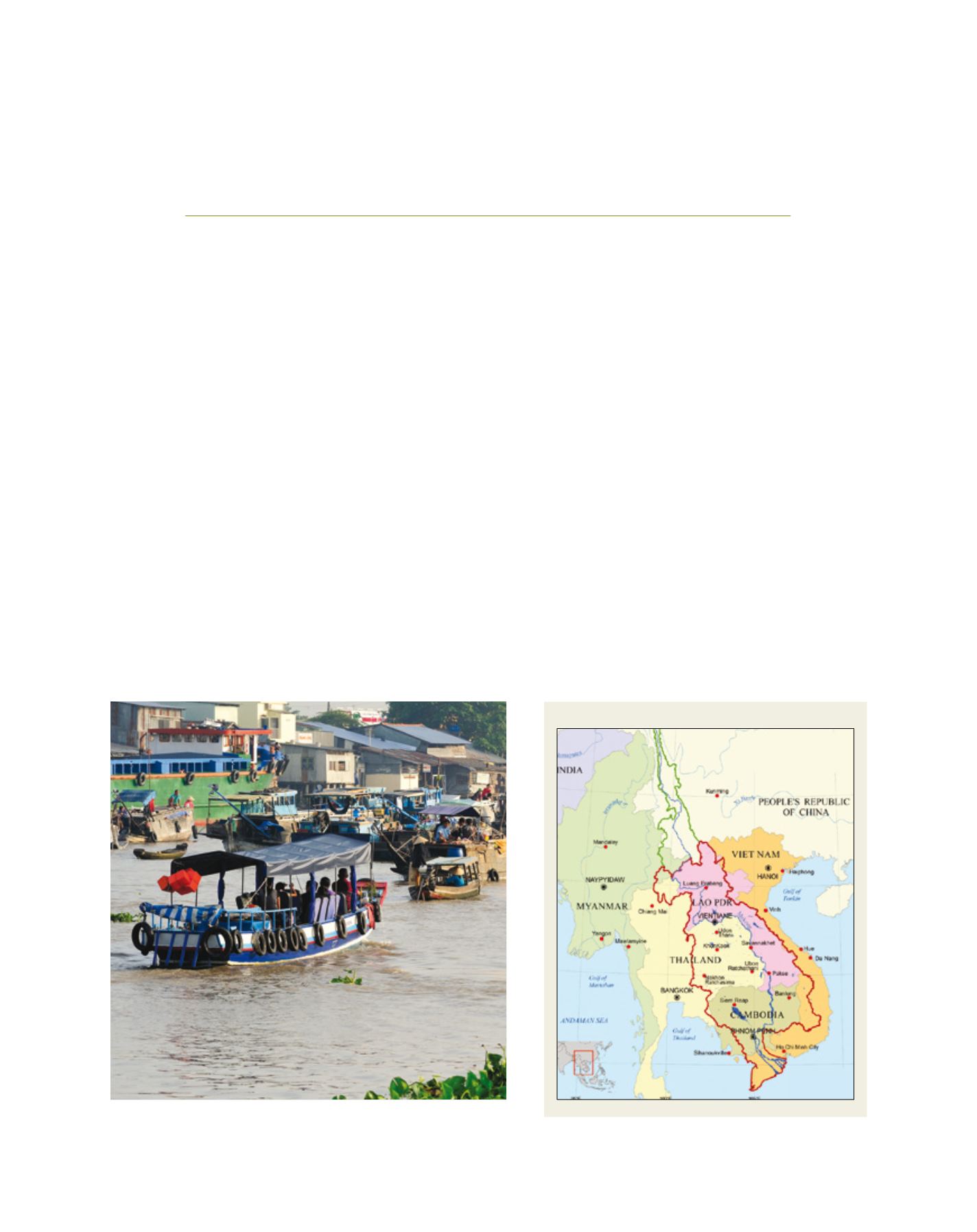

[
] 70
The Mekong River Basin: practical experiences
in transboundary water management
Hans Guttman, Chief Executive Officer, Mekong River Commission Secretariat
T
he Mekong River Basin covers almost 800,000 km
2
. The
main stem of the river stretches some 4,800 km from the
glaciers in the Chinese Himalayas, through Myanmar,
Lao People’s Democratic Republic (Lao PDR), Thailand and
Cambodia, meeting the sea in the vast delta in southern Viet
Nam. The river has high inter-seasonal variation in flows
(varying up to fifty-fold between wet and dry seasons), fed by the
south-west monsoon. The cycling of flooding and drought has
created a rich ecology, but also difficult conditions for human
settlement. The Lower Mekong River Basin (LMB) comprises
over 60 million people.
International cooperation in the use and development of the Mekong’s
water was first formalized through the establishment of the Mekong
Committee (MC) in 1957 under the auspices of the United Nations.
The committee’s work was in part founded on the success of the
Tennessee Valley Authority in the United States, demonstrating how
the promotion of infrastructure development around water and other
natural resources can rapidly support development.
The main focus of the MC was infrastructure devel-
opment through the Indicative Basin Plan, which in
the 1970s proposed tributary and mainstream develop-
ment in 180 projects. This included 700,000 hectares of
irrigation expansion and 3,300 MW of tributary hydro-
power in the short term (10 years), and 17,000 MW of
hydropower, including mainstream dams and extend-
ing navigation by 800 km, in the long term.
Lao PDR, Thailand and Viet Nam established the
Interim Mekong Committee in 1977; Cambodia was
to be absent for 14 years, restricting further consid-
eration of actions on the mainstream. In 1995 the
Mekong Agreement, a new treaty signed by Cambodia,
Lao PDR, Thailand and Viet Nam, created the Mekong
River Commission (MRC) and provided a solid basis
for cooperation in the sustainable development of the
basin’s resources.
In order to turn the Mekong Agreement into a
practical framework for cooperation, MRC began to
T
ransboundary
W
ater
M
anagement
If infrastructure development is promoted around water and other natural resources,
it can rapidly support development
Image: MRC
Mekong overview
Source: MRC


















